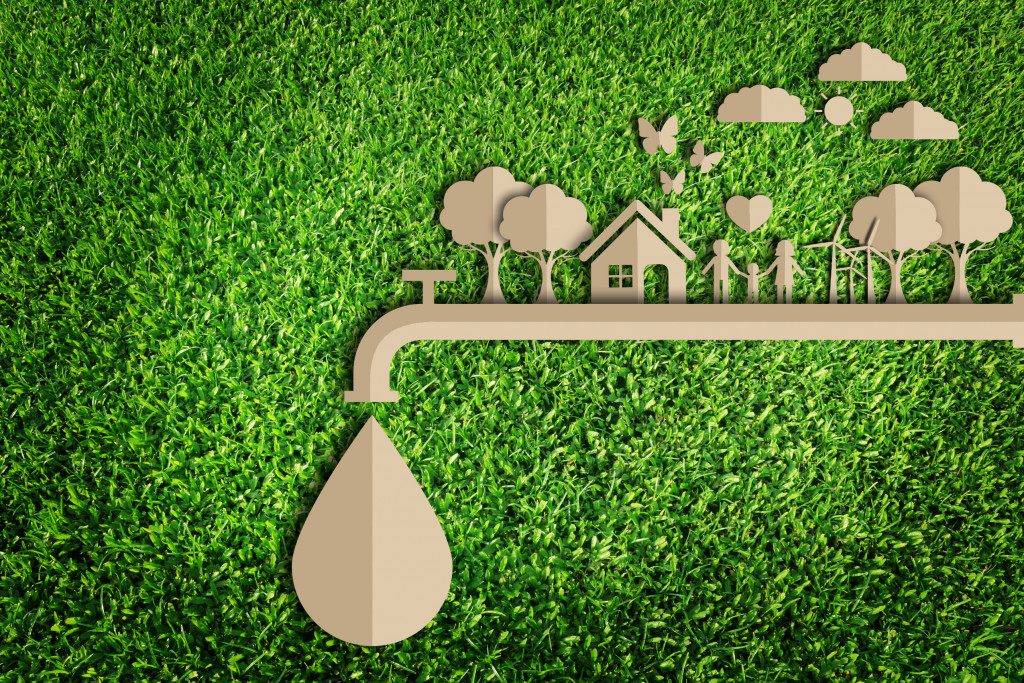We live in an age where people are being confronted with the realities of climate change. The harmful effects of human activity on the environment can’t be ignored. They are actually coming back to haunt us in various ways, from disastrous flooding and storms to record-breaking wildfires.
Every individual can make a difference by lowering their overall consumption and being eco-conscious in their purchases. Yet, these factors aren’t always taken into consideration when buying or remodeling a property.
For most people, a house is the biggest purchase they’ll ever make. Likewise, the costs of maintenance or repair will often dwarf those for any other asset you own. Choose responsibly in these areas, and you can make a significant contribution to the future of our planet.
Material sourcing and construction techniques
When you search on your phone for “security door installers near me,” you don’t just get convenient and quick service. Those things might be what matters most to you, especially during an emergency. But in the big picture, you’re also helping the environment whenever you choose local options.
Fossil fuels power every trip that a supplier must make to procure materials or deliver finished goods. The more miles they must cover, the greater the resulting cost to the environment in terms of emissions. Sourcing local materials and dealing with local contractors is a green practice, even if you don’t realize it.
Of course, when you’re dealing with contractors, they also have to work with others upstream of the supply chain. Having them vet their sources will extend those positive impacts further.
The techniques used in constructions also make a difference in this regard. Prefabricated work is often favored because it can be carried out under controlled conditions, ensuring that project deadlines are met. But this technique also minimizes emissions because most labor is done off-site, with assembled units delivered once ready.
Modular design is a natural fit with prefabrication. When your home is built with this principle in mind, not only are the parts ready-made, they’re easy to replace. Any repairs needed in the long haul will be more cost-effective, both for you and the environment.

Passive design and net-zero
The structures we build an account for a large chunk of our emissions: nearly 40% worldwide in 2018. And much of that is sunk into the effort involved in maintaining a comfortable indoor environment.
In cold climates, heating water and keeping the air warm are a constant need and a major driver of energy consumption. Denizens of warmer regions will face the same issues with the intense use of air conditioning to stay comfortable.
Most homes draw upon local utility companies for their energy needs. But the production and delivery of this energy to our homes usually depends on the burning of fossil fuels. Changing how you source energy helps. Prioritize renewables, or go a step further and install solar panels if the local conditions are favorable.
There are other ways to offset your home’s energy consumption. Passive design features can help to constantly drive down the costs of thermoregulation. Heat-absorbing masonry located in an area that’s exposed to the sun in the morning, for example, will continue to diffuse warmth for the rest of the day.
Not all homeowners may be able to achieve net-zero. But approaching it is something to strive for, and it’s becoming a more affordable goal each year.
Resilience and size
One of the best ways to ensure that your home is environmentally-friendly is to build it to last. A more sturdy and durable home will resist wear and tear, requiring less repair and maintenance over the years.
High-quality materials and construction will cost more right now. But skimp on quality, and you’ll pay even greater costs in the long term. And the environment will suffer in the process. It’s something we can’t afford to do as we try to solve the challenge of sustainability.
Along with building more resilient homes, there’s one thing we can all do that will help minimize our dwellings’ impact on the environment. We can construct smaller homes.
A smaller property costs less energy to maintain and renovate. It takes less to heat or cool the indoors to the desired temperature. How much of a large home really gets occupied by people versus serving as a glorified storage space?
Ultimately, if you want to get started right away and help the environment with your home purchase, size matters a lot. Buy a small home, and all the other qualities that can make it more eco-friendly will be easier to attain.
